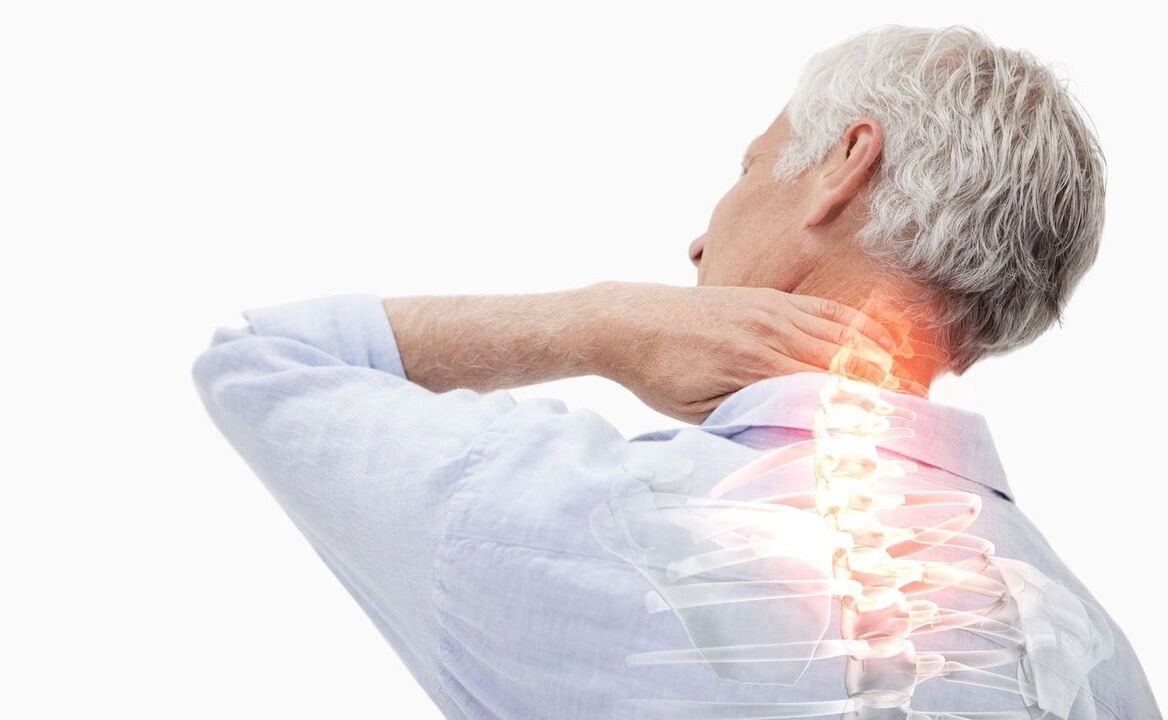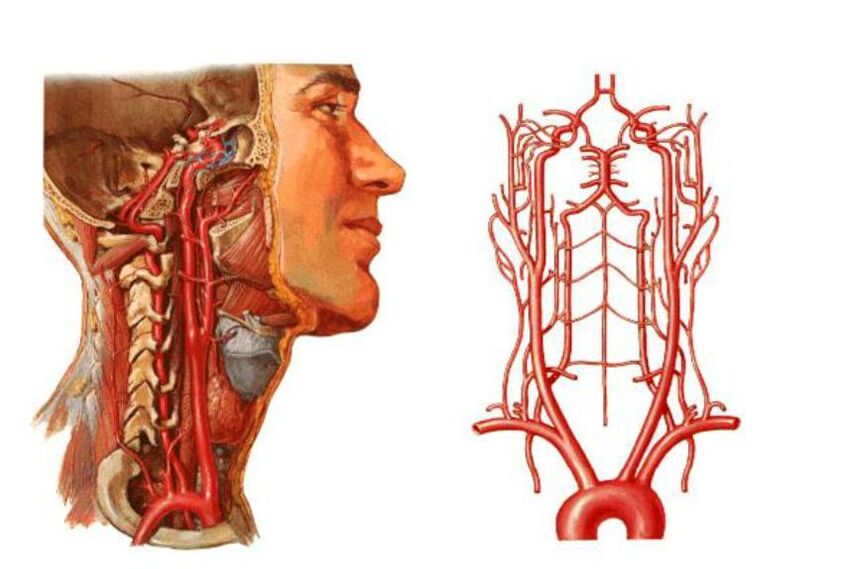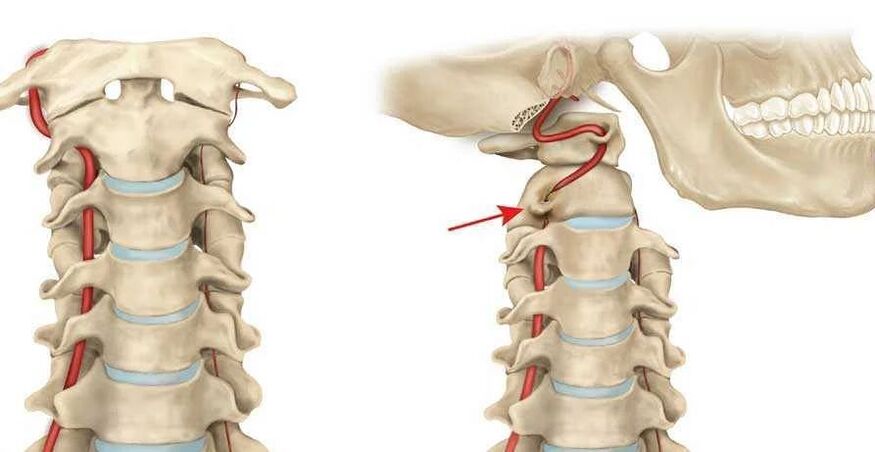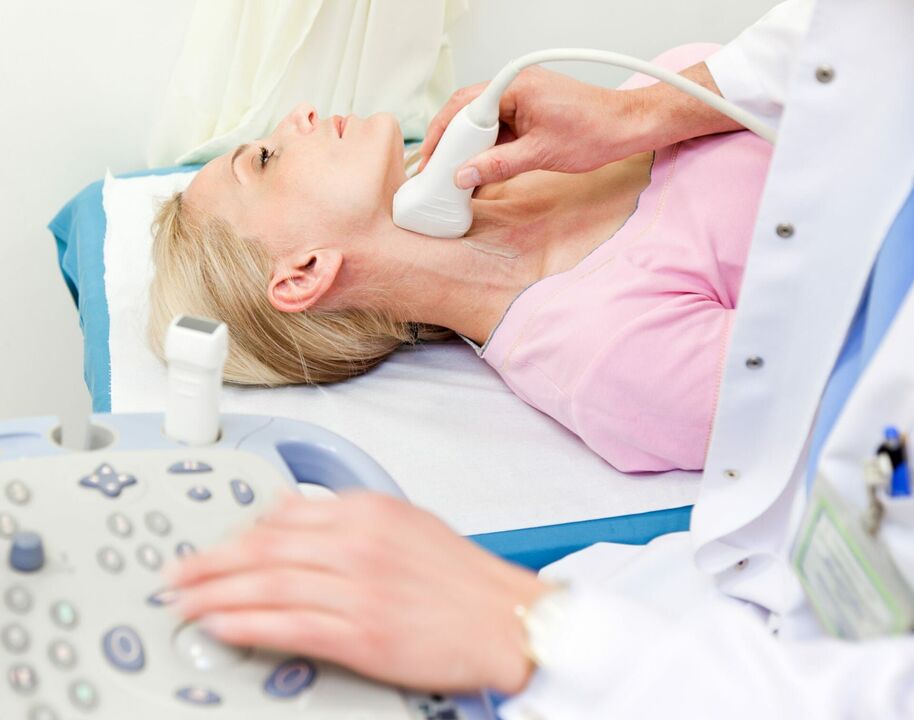Among all the pathological processes that affect the spine in different parts, cervical osteochondrosis is considered one of the most common. This disease leads to numerous complications, mainly because it affects the spinal cord, but it also negatively affects the functioning of the brain.
According to statistics for 2017, the disease has become much younger. If previously osteochondrosis mostly affected people after 40 years, today various stages of cervical osteochondrosis are diagnosed in 90% of people over 25 years old. For this reason, it is important to know as much as possible about the pathology, from what it is to treatment methods.

What is cervical osteochondrosis?
In medical practice, the words cervical osteochondrosis mean an acquired progressive disease that affects a certain part of the spine. This pathological process is characterized by degenerative-dystrophic processes in the tissues of the intervertebral discs, which are the shock absorbers of the cervical vertebrae.
Degenerative-dystrophic changes on the intervertebral discs are caused by the fact that they are worn and deformed. As a result, the distance between the vertebrae decreases and as a result the following consequences occur:

- Narrowing of the spinal canal in certain areas of the spine.
- Compression of the vertebral arteries - large blood vessels that provide blood flow to the brain. Because of this, the supply to the brain worsens and the blood circulation in the cervical spinal cord is disturbed.
- Intervertebral discs can become deformed and flattened. This leads to the compression of certain areas of the spinal cord and nerves, and most often to the compression of the nerve roots.
All these problems threaten not only disturbed circulation in the brain, neck pain, headache, etc. The development of osteochondrosis of the cervical spine is dangerous due to neurological problems, deterioration of the central nervous system, and damage to brain tissue.
According to the international classification of diseases, osteochondrosis of the cervical spine is assigned several separate codes. The disease code according to ICD 10 depends on the age at which the disease was diagnosed:
- M02 – dystrophy of intervertebral discs in adolescence.
- M42. 12 – degenerative process in the neck area in adults.
Many factors depend on the age of the patient and the degree of development of the pathological process, for example, the consequences, complications, symptoms and, of course, the principles of treatment.
Causes
Knowing the causes of the development of cervical osteochondrosis can play a decisive role in the diagnostic process, as well as in determining the principles of the fight against the disease.
However, before stating the reasons, it is worth saying that doctors identify two factors that lead to the development of this pathological process:
- Pathological - the destruction of intervertebral discs and other vertebral structures with the involvement of nearby tissues, vessels and nerve bundles in the pathological process occurs under the influence of unfavorable external factors. The more serious these factors and other pathologies are, the faster the disease develops.
- Physiological - the development of pathology is primarily based on age-related changes. It is about the natural aging of the cartilage tissue of the spinal column, salt deposits, etc.
If we list more specific causes of cervical osteochondrosis, they are as follows:
- Disorders of metabolic processes in the body, as well as certain stages of obesity.
- Physical inactivity is a phenomenon characterized by limited mobility. We're not just talking about injuries or illnesses, it also includes sedentary lifestyles and sedentary work.
- Pathologies of the cardiovascular system that contribute to impaired blood circulation in the brain, changes in pressure, etc.
- Improper posture includes various forms of scoliosis, rheumatism, and even flat feet.
- Cervical spine injury. In this case, we are talking about sprains, bumps, bruises. Injuries to other parts of the spine can affect the development of cervical osteochondrosis.
- Excessive physical stress on the cervical spine, caused by intense sports or severe physical difficulties, depending on the type of activity of the person.
- A sedentary lifestyle is also dangerous because of the constant tension in the cervical spine and the entire spine if you sit incorrectly or on uncomfortable furniture.
- Hernia of the cervical spine, as well as various accompanying diseases.
- Forced holding of the head for a long time in an uncomfortable or unnatural position. In this case, not only the muscles are strained, but also the spine is bent in the cervical region.
- Doctors believe that constant stress and nervous tension are a very common cause.
- Congenital anomalies in the structure of the spine are considered one of the reasons.

What health hazards does it pose?
As mentioned earlier, the cervical spine region contains not only the spinal cord and various nerve branches, but also the vertebral arteries that supply blood to the occipital part of the brain, the cerebellum, and the medulla oblongata.
With the development of cervical osteochondrosis, inflammation of nearby tissues occurs. In addition, the development of pathology threatens to compress nerve roots and squeeze blood vessels, the consequences of which are as follows:
- Osteochondrosis is accompanied by spinal deformities, resulting in the narrowing of the spinal canal in certain areas. This can lead to compression of the spinal cord and nerve branches, which promises serious neurological problems. In more severe cases, the person feels pain, and there is even a possibility of losing control over certain parts of the body (mainly in the hands or face).
- Compression of the neck vessels, as already mentioned, is accompanied by impaired circulation in the occipital region of the brain. In this case, the brain stops receiving oxygen and nutrients in the necessary quantities and oxygen starvation begins. If the circulation is disturbed, there is a real danger of ischemic stroke and various neurological pathologies.
Syndromes
Speaking of the danger that cervical osteochondrosis presents with progression and lack of appropriate treatment, the disease can lead to a number of complications and syndromes.
The main syndromes are:
- Vertebral.
- Vertebral artery.
- Koreshkovy.
- Heartfelt.
It is important to know that each of these symptoms is accompanied by painful sensations of a different nature, as well as a series of unfavorable clinical signs. A person may experience dizziness, ringing in the ears and more.
Vertebral syndrome
It talks about the direct connection between cervical osteochondrosis and bone tissue and cartilage. The symptoms of this type of pathology are also associated with damage to the aforementioned tissues:
- Door movements are partially or completely restricted.
- Head movements are accompanied by painful sensations in the neck area.
- X-ray shows morphological changes in tissues (intervertebral and vertebrae).
It is worth noting that vertebral syndrome is always accompanied by these three clinical signs. If at least 1 of them is missing, the diagnosis will be completely different.

Vertebral artery syndrome
This syndrome is caused by a narrowing of the vertebral artery, which leads to vestibular, vascular and autonomic problems. In this case, the main symptoms are extensive:
- Headaches and migraines.
- Visual impairment.
- Tinnitus.
- Frequent dizziness and more.
The most dangerous symptom is fainting, which indicates a severe lack of oxygen.
Radicular syndrome
It occurs when the roots of the spinal cord are damaged. In this case, the nerve conduction is disturbed, the person may feel pain or lose sensitivity in certain parts of the body, and even suffer from paralysis.
Depending on which of the 8 pairs of radicles the conduction disorder occurs, the following symptoms are identified:
- 1 pair – numbness or pain in the back of the head;
- 3rd pair – disturbed chewing reflex, tongue numbness and unpleasant sensations behind the ears;
- 4 pairs – pain in the collarbone area, disturbed swallowing reflex;
- 5 pair – disorders of the shoulder girdle, accompanied by problems in hand movement;
- 6th pair - the patient begins to feel pain and numbness of the forearm and shoulder blades;
- 7th pair – hands and fingers (usually index and middle fingers) become numb;
- 8th pair – problems similar to the previous point, but the ring finger and little finger feel numb.
Based on the described characteristics, it is sometimes possible to determine which pair of roots is affected by radicular syndrome.
Cardiac syndrome
Despite the fact that the pathological process is still localized in the cervical spine, the syndrome has all the signs of cardiac pathologies. The clinical picture is as follows:
- Rapid pulse.
- Pain in the sternum.
- Shortness of breath, weakness, lethargy, reduced efficiency.
The degree of disease development
When we talk about the degree of osteochondrosis of the cervical spine, we mean the stages of progression of the pathological process, which differ in clinical signs. In total, there are four stages of disease development:
- The first stage is characterized by vague symptoms. Patients complain of minor headaches, and during the initial examination the doctor notes a slight degree of muscle stiffness.
- Pain in the cervical spine and head is more frequent, more intense and radiates to the shoulder and arms. The pathology is caused by damage to the intervertebral discs and pinched nerve roots. The pain intensifies when turning the head, leaning back and bending forward.
- In the third stage, the pain is constant, weakness of the muscles in the arms is observed, and hernias are formed in the intervertebral discs. Movements in the neck area are limited, and frequent dizziness is present.
- The fourth stage is followed by the complete destruction of the intervertebral disc, cartilage tissue is replaced by connective tissue. In addition to pain and dizziness, problems with coordination are also observed, and the vertebral arteries are often constricted.
Signs and symptoms of cervical osteochondrosis
In order to consult a doctor in a timely manner, it is necessary to clearly understand the signs of cervical osteochondrosis. In some cases, such knowledge allows you to seek help in the initial stages of the disease, when it is easier to treat.
In general, the symptoms of osteochondrosis of the cervical spine are as follows:
- Pain in osteochondrosis is always present, only the intensity and frequency differ. Pain is the first clinical sign. Their intensity depends on the stage of disease progression, they are blunt or compressive in nature. Painful sensations are present mainly in the neck and occipital region, but they can also radiate to the temporal region, shoulder girdle and arms.
- In most cases, there are manifestations of damage to the vestibular apparatus. It is about frequent unexplained dizziness, nausea, poor coordination of movements, uneven gait, loss of space.
- One of the most common clinical signs is stiffness of the neck muscles and stiffness of movements. It is difficult for a person to turn, lower and throw back his head, the movements are accompanied by attacks of pain.
- Many patients report a "goosebumps" sensation on the scalp or a characteristic burning sensation.
- Weakness and stiffness of the muscles occur in the area of the hands.
- There are often psychological manifestations, expressed in depression, drowsiness, sudden changes in mood, shortness of breath or irritability.
- Due to weak circulation and damage to brain tissue, dizziness increases and noise in the ears appears, similar to rustling, pulsating and buzzing.
- Most patients notice a worsening of vision, as well as pain in the eyeballs, especially when they try to squint too much to the left, right, up or down.
Sometimes it is possible to determine the degree of development of the pathological process by the symptoms. However, this is still not enough for a complete diagnosis and numerous diagnostic measures are required.

Diagnostic methods
The diagnosis of cervical osteochondrosis is necessary to determine the location and stage of disease progression. The following diagnostic methods are required for a complete diagnosis:
- Radiography is the primary method for determining the degree and location of spinal deformity.
- Computed tomography can be used to more accurately diagnose pathological changes in the vertebrae and intervertebral discs.
- MRI (magnetic resonance) - enables a detailed examination of discs and vertebrae, determination of the presence of hernias, protrusions, extent of lesions, etc.
- Dopplerography - with this examination, it becomes possible to find the place of compression of the artery and assess the degree of circulatory disorders.
Treatment methods
Treatment of osteochondrosis of the neck always includes an integrated approach. The principles of treatment depend on a number of factors, such as the age of the patient, the stage of development of the disease, the severity of the clinical picture, etc.
However, in this situation, you cannot do without a doctor and first of all you can contact a general practitioner, who will then refer you to a vertebrologist.
As for the integrated approach: osteochondrosis of the cervical spine is treated with the help of drug therapy, physiotherapy, massage, exercise therapy and other methods, which are worth talking about in more detail.
Drug treatment
The basis for the treatment of cervical osteochondrosis is drug therapy, which includes the use of tablets, drugs and drugs of the following groups:

- Painkillers - analgesics and antispasmodics. The first directly numb the nerve centers, which alleviates painful sensations. The latter allow you to relieve the spasm of the neck muscles, improving blood flow and suppressing pain.
- NSAIDs - non-steroidal anti-inflammatory drugs are necessary to reduce inflammation, most of them also relieve pain. Often these drugs are used in the form of gels or ointments that are rubbed into the affected area.
- Muscle relaxants are another way to relieve muscle spasms in the cervical region.
- Chondroprotectors are mandatory in certain stages of osteochondrosis of the spine, because they contribute to the restoration of bone tissue.
- B vitamins - normalize the metabolic processes of nervous tissue, improving the conduction of nerve impulses and promoting the functioning of the central nervous system.
Remember, treatment should be carried out only under the supervision of a doctor, who is responsible for prescribing each drug, as well as for determining the duration of its use and dosage.
Physiotherapy
Treatment of osteochondrosis of the neck will be many times more effective using certain physiotherapy techniques:
- Electrophoresis.
- Laser therapy.
- Ultrasound.
- Massage.
Massage therapy must be carried out by an experienced medical specialist, the treatment is carried out in the course of at least 10 sessions. Cervical massages help normalize blood circulation, restore elasticity, muscle tone, relieve pain, etc.
Physiotherapy
Therapeutic exercises also help speed up recovery, but are only performed during the recovery stages. It is important that the exercises do not bring discomfort or pain to the patient. Exercise therapy is aimed at strengthening muscles and relieving discomfort during movement by increasing the elasticity of muscle fibers.
The exercise technique is initially developed by a physiotherapist, and then the patient can independently perform gymnastics at home.
Manual therapy
Manual therapy is based on the principle of restoring motor functions and mobility between the vertebrae. Initially, the manipulations consist of a light relaxing massage, and then the doctor applies increasing force, applying pressure and turning the neck towards the vertebrae.
Kuznetsov's applicator
The use of Kuznetsov applicators is one of the methods of treatment of spine diseases, including osteochondrosis. The effect of the device on the cervical spine normalizes metabolic processes, relieves pain, increases muscle tone, improves blood circulation, increases nerve tissue conductivity, etc.
Treatment at home
The entire range of therapeutic measures is carried out at home, with the exception of physiotherapy, massage (in some cases) and the first stages of exercise therapy. However, now we are talking about traditional medicine, and we will consider several of the most effective recipes:
- To use horseradish - take a leaf of this plant, pour boiling water over it and apply it to the neck from the inside, secure it with a bandage. It can be left on while you sleep to enhance the effect.
- If there are no contraindications from the doctor, warming the cervical spine would be a good remedy. The easiest way is to use a pepper patch, but you can heat the wax cake and apply it 1-2 times until it cools completely.
Disease prevention
In order to prevent the development of the disease or its return after treatment, it is necessary to prevent osteochondrosis of the cervical spine. It consists of the following simple recommendations:
- Sleep on a flat, hard surface, it is better to buy a special orthopedic mattress and pillow that takes the shape of your head.
- To prevent the disease, monitor physical activity and do not overexert the spine. If you have to lift weights, do it smoothly and keep your back straight.
- If your job requires you to sit for long periods of time, take breaks. Every hour you should walk or stretch stiff muscles with simple gymnastic movements.
To prevent osteochondrosis, it is useful to swim and hang on a horizontal bar every day for 2-3 minutes.
























